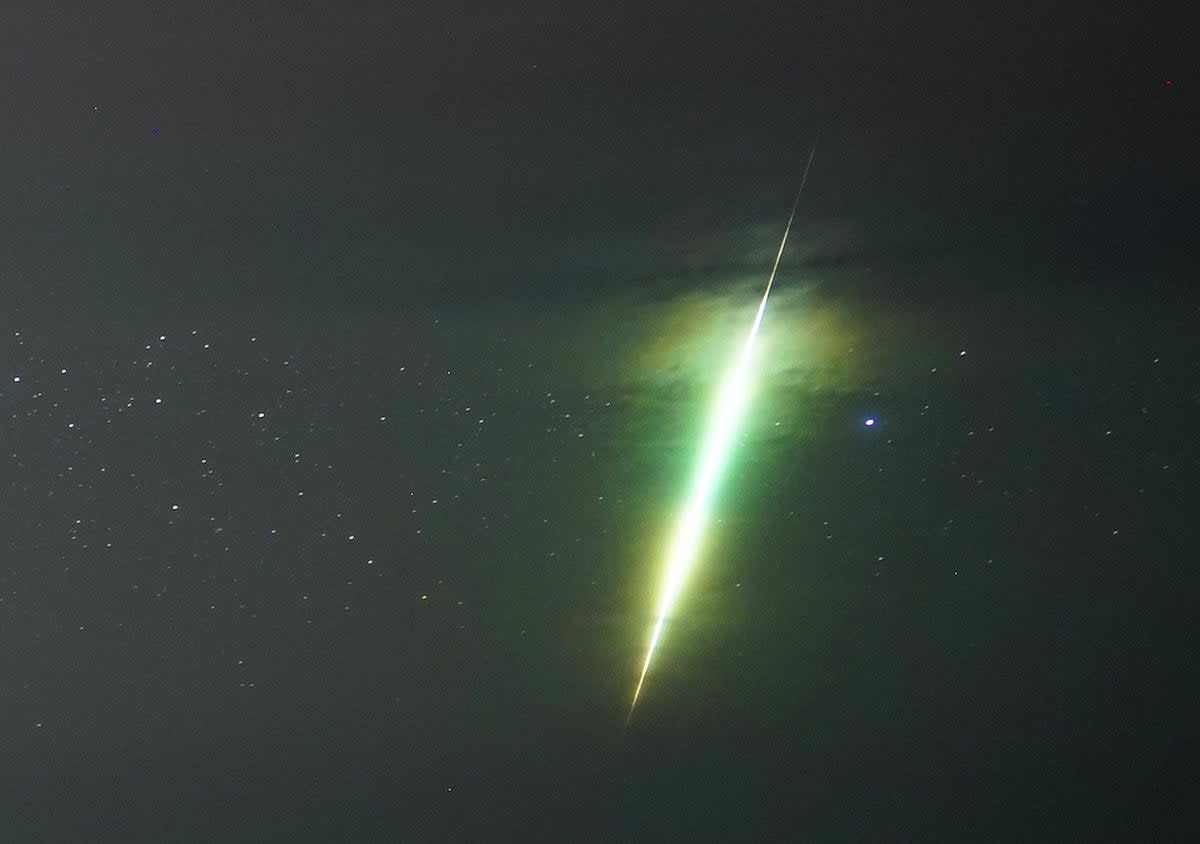Draconid meteor shower: When it peaks and how to watch it in the UK

The Draconid meteor shower is one of two meteor showers to annually grace skies in October.
Also known as the Giacobinids, the Draconid tends to be a less-active meteor shower.
It’s best caught in the northern hemisphere but it’s still possible to see them in the southern.
Although it’s uncommon to see more than five meteors per hour, in 1933 and 1946, stargazers got to enjoy thousands of meteors in the space of an hour.
And 2023 could be another lucky year, with the show set to visible in UK skies.
Here’s everything you need to know about the Draconid meteor shower 2023.
What is a meteor shower?
According to National Geographic, when a meteoroid (small rock in space) enters the Earth’s upper atmosphere, it heats up due to friction from the air. The heat causes gases around the meteoroid to glow brighly, and a meteor appears.
A number of meteors flashing across the sky from roughly the same point is known as a meteor shower.
They are sometimes called shooting stars, although they have nothing to do with stars.
Meteors are mostly pieces of comet dust and ice no larger than a grain of rice. They cause no harm to humans.
Meteoroids that reach the Earth’s surface without disintegrating are called meteorites. Meteoroids are principally rocks broken off asteroids and can weigh as much as 60 tonnes.
There are only two recorded incidents of an injury caused by a meteorite.
In one of these incidents, an 8 lb meteorite crashed through a woman's roof in 1954 and left her with bruises.
When does the Draconid meteor shower peak?
The Draconid meteor shower will take place between October 6 and 10 this year.
Over this period, there will be a chance of seeing Draconid meteors whenever the shower’s radiant point is above the horizon, with the number of visible meteors increasing the higher the radiant point is in the sky.
From London, the radiant point is known as circumpolar, which means it is always above the horizon and the shower will be active throughout the night.
It is expected to peak on October 9 in London and stargazers can expect to see several meteors per hour.
Where can I see the Draconid meteor shower?
To watch a meteor shower, you don't need specialised gear. All you actually need to observe a meteor shower is a clear sky, plenty of patience, and an interactive meteor-shower sky map.
There are a few tips you should know, to maximise your viewing experience.
The ideal time to watch meteor showers is typically just after midnight and before daybreak.
Your eyes will need time to adjust to the dark, so get to your location 30 to 45 minutes early.
Then recline and observe a sizable portion of the night sky.
Dress for the weather and make sure you are comfortable because you might need to wait around for a while.


